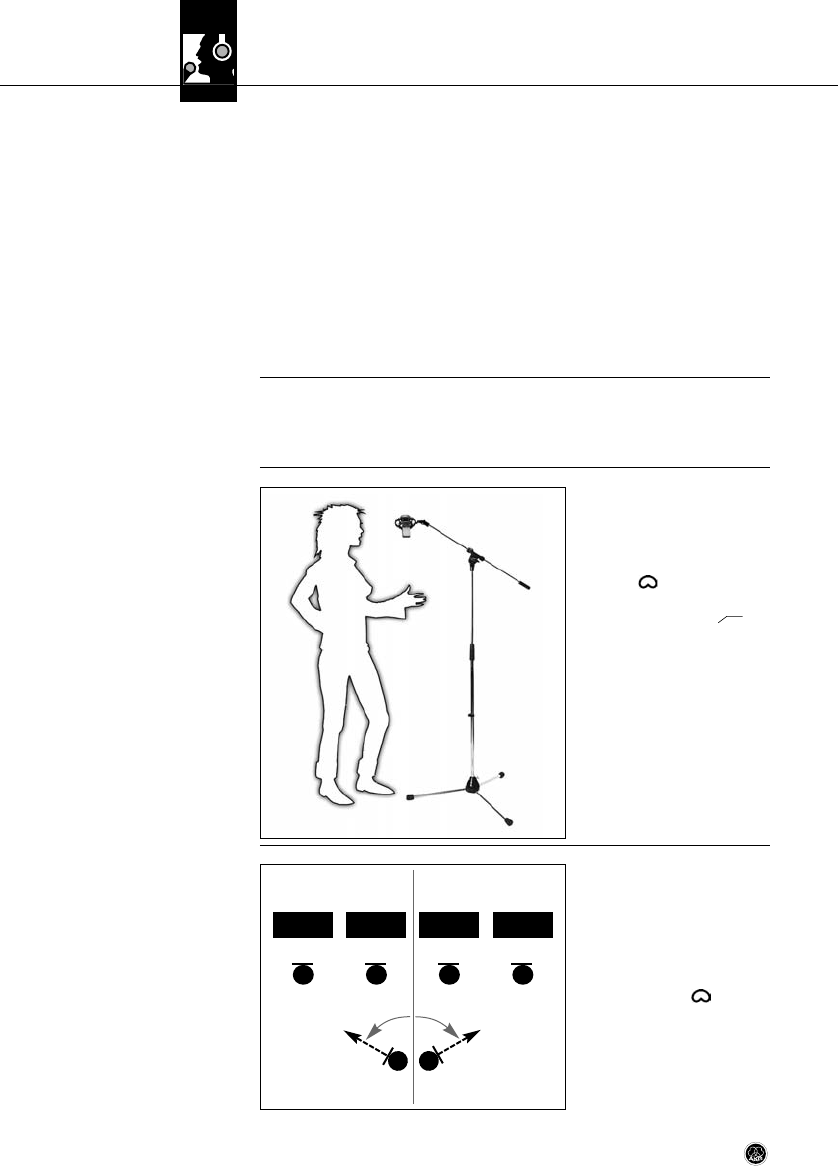
10 PERCEPTION 820 TUBE
4 Using the Microphone
4.3 Selecting
Polar Patterns
4.4 Hints on Microphone
Placement
4.4.1 Lead Vocals
Fig. 5: Solo vocalist.
4.4.2 Choir/
Backing Vocals
Fig. 6: Miking a large
mixed choir.
Each of the PERCEPTION 820 TUBE’s selectable polar patterns is virtually frequency inde-
pendent so that reflected sound, too will be reproduced accurately and uncolored.
• Omnidirectional (left-hand setting): This is the preferred setting for “all around the
mic” recording, high quality ambience (audience sound) miking, or far-field recording in
exceptionally good-sounding large or small recording rooms, etc.
• Cardioid (center setting): This is a standard setting for recording and gives excellent
results on all kinds of voices and a wide range of instruments. Remember to aim the mi-
crophone front (see fig. 4 on page 8) at the sound source.
• Figure eight (right-hand setting):The microphone will pick up sounds arriving from the
front and rear with equal sensitivity. Use this mode to mic up the side signal in M/S
stereo recording or to record two sound sources (talkers, instruments) facing each other.
It is also a good choice for cymbal overhead miking.
Every instrument radiates its sound in a specific way. Therefore, to get the best sound, do
not hesitate to experiment with microphone placement.
As an introduction to the “secret science of making good recordings”, the following sections
describe some proven miking techniques. (Illustrations show generic microphones.)
• Place the microphone 6 to 12 in.
(15 to 30 cm) from the vocalist’s
mouth.
• Select the cardioid polar pattern:
set the polar pattern selector to
cardioid ( ).
• Switch the bass cut filter in: set
the bass cut switch to “ ”.
• We strongly recommend placing
a PF 80 pop screen (available as
an optional accessory) between
the microphone and vocalist to
eliminate pop noise.
• To give the vocalist better control
of their own voice, we recom-
mend adding the vocalist's track
to their headphone monitor sig-
nal.
• To record large mixed choirs, we
recommend using a pair of car-
dioid microphones to get a stereo
signal, plus one PERCEPTION 820
TUBE each for the soprano, alto,
tenor, and bass sections.
- Set each PERCEPTION 820
TUBE to cardioid ( ).
- Place each microphone about
5 feet (1.5 m) in front of the re-
spective section, about 6 feet
(1.8 m) above the ground.
- Aim each microphone at the
center of its assigned section.
B T A S
60°60°
P 820
P 820 P 820 P 820
Perception_820_Manual_final4_C030818 02/05/2009 11:26 Seite 10 (Schwarz/Black Auszug)


















